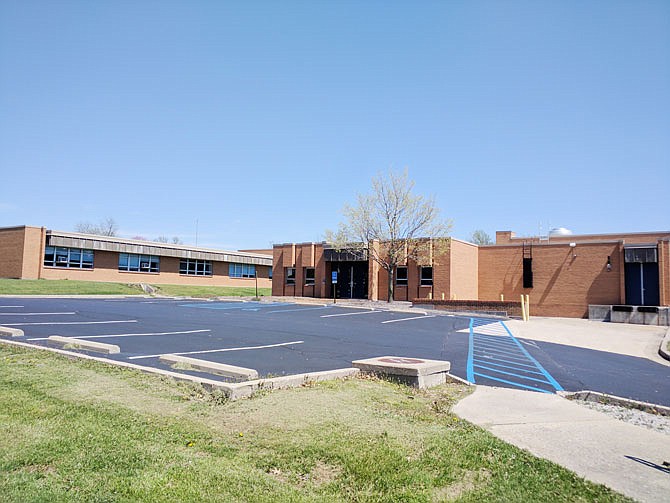The county is no longer eyeing Rice Hall as a new justice center location, officials have announced.
"Rice Hall is pretty much out of the mix for a multitude of reasons," County Commissioner Gary Jungermann said Tuesday.
Jungermann and Sheriff Clay Chism spoke to a crowd of about 100 at a Callaway County Democrats meeting Monday. They also spoke separately to a gathering of Republicans last Thursday, Jungermann said.
Rice Hall, located at the edge of the Missouri School for the Deaf campus, is currently unoccupied. A bill introduced in the Missouri Legislature earlier this year by Sen. Jeanie Riddle, R-Mokane, would allow the state to convey it to an as-yet undetermined buyer.
County officials are trying to address a crumbling jail, too-small office facilities and other problems. (Read more about those issues at bit.ly/2U2tsds)
Rice Hall stands on enough acreage to accommodate a justice center (a combined jail, courthouse, sheriff's office and the related offices). An architect determined there was plenty of room for the offices in the existing building.
But the location also came with issues: potentially high renovation and maintenance cost, plus resistance from the neighbors.
The backlash from members of the local deaf community and Missouri School for the Deaf alumni was strong.
"I took (my son) to school there at age 8," Mary Karnes, a Fulton resident and parent of a deaf child, said during an April public forum. "If there had been a jail on campus, I would've thought long and hard before sending my child there, and I probably would have decided no."
Many connected to the school voiced fears a justice center would have a negative impact on MSD, which already suffers from a shrinking student body.
"We got a lot of feedback and I'm glad the deaf community voiced their thoughts, but what really tipped the scale was getting numbers back from the firm we're working with," Jungermann said Tuesday.
Architect Jennifer Wilson of N-Form Architecture observed the rooms are bigger than they need to be as offices, leading to greater costs both immediately and over time. Plus, older buildings like Rice Hall often come with hidden costs, Jungermann said.
An initial estimate put the savings at $5 million-$10 million (of an estimated $30 million total for the justice center project); recent figures have lead the commission to believe total savings would be less than $2 million.
"Like I told them last night, Rice Hall was only on the table because we were trying to figure out some savings for taxpayers," Jungermann said. "We've still got a lot of things on the table. We've not made a decision about what we're going to do."
Current options include trying to use the properties the county already owns.
"We wanted to try to (combine the offices into a justice center), because it makes a lot of sense to do that for security reasons and a lot of places are doing that, but it doesn't seem like it's working out so well in Callaway," Jungermann said. "Everybody wants the courts to stay somewhat where they're at, or at least downtown, but they don't want the jail downtown."
He said the county is currently investigating what properties might be available in the downtown area.
"Whatever decision we make is surely not going to be 100 percent popular," he added. "We're weighing what we have to weigh and trying to fulfill the needs we have. We're doing our due diligence."

